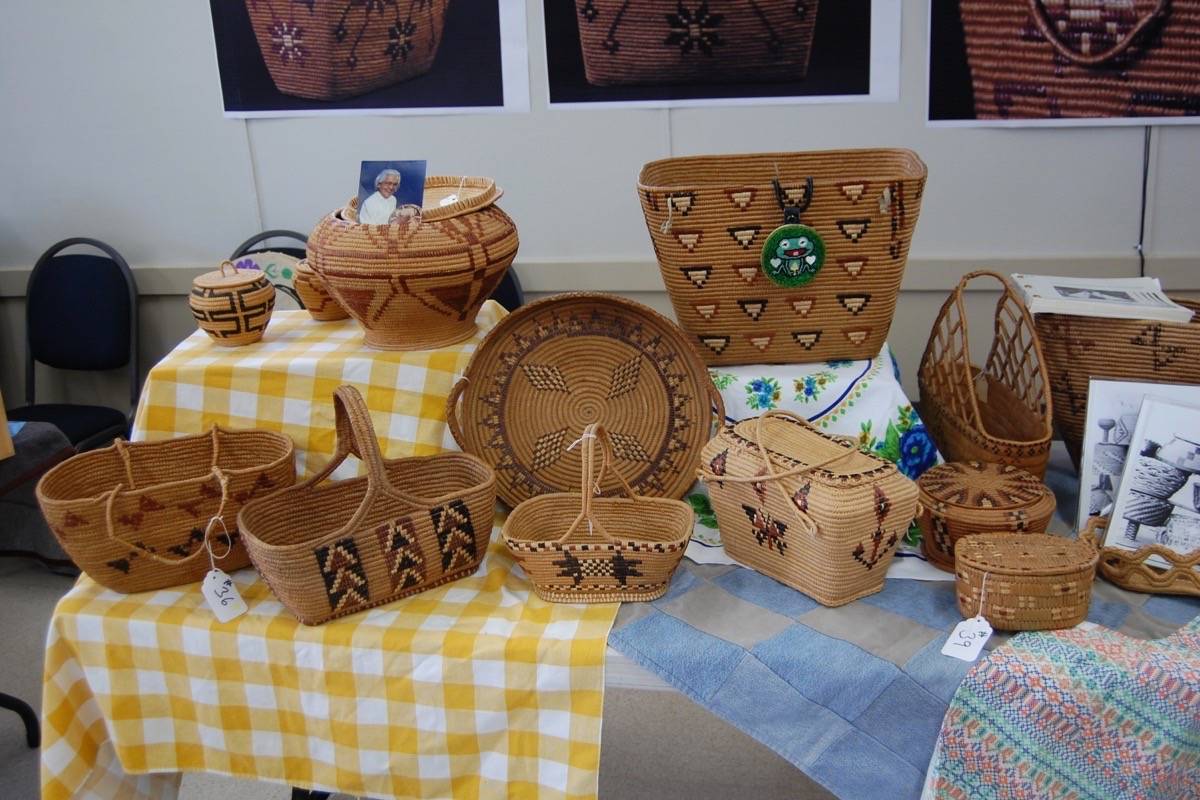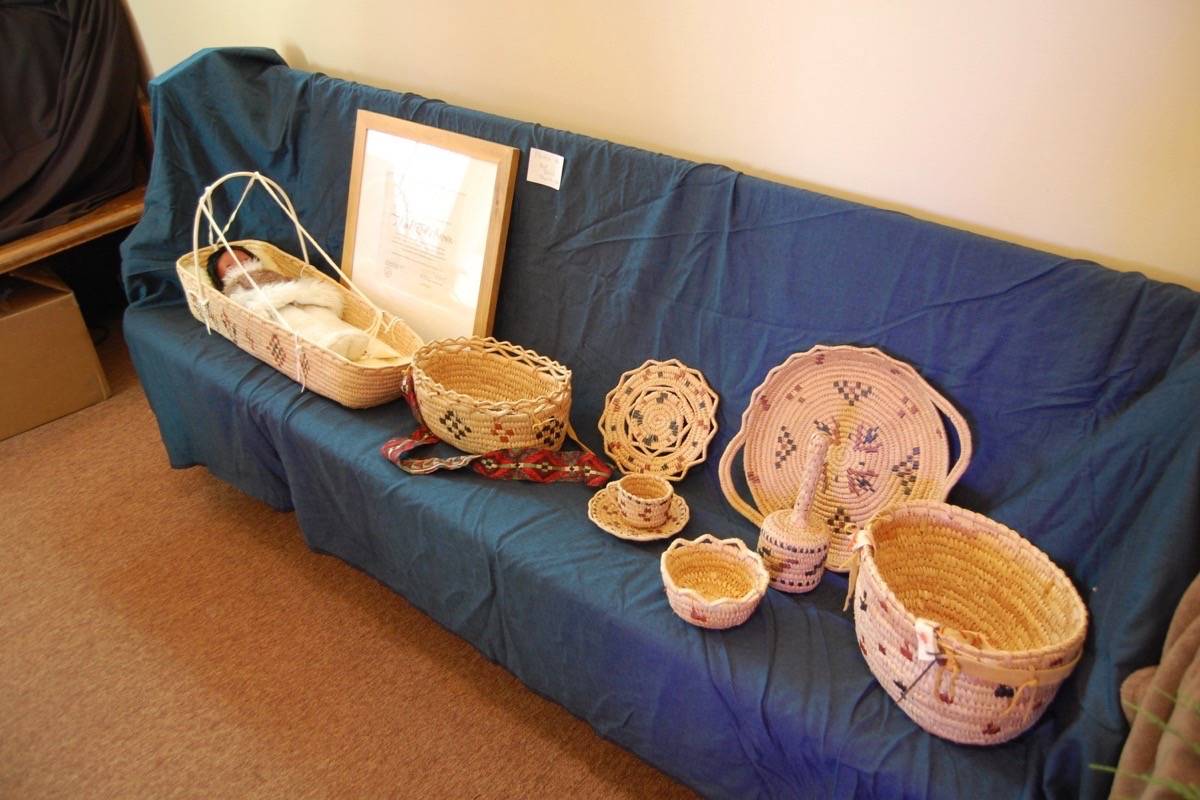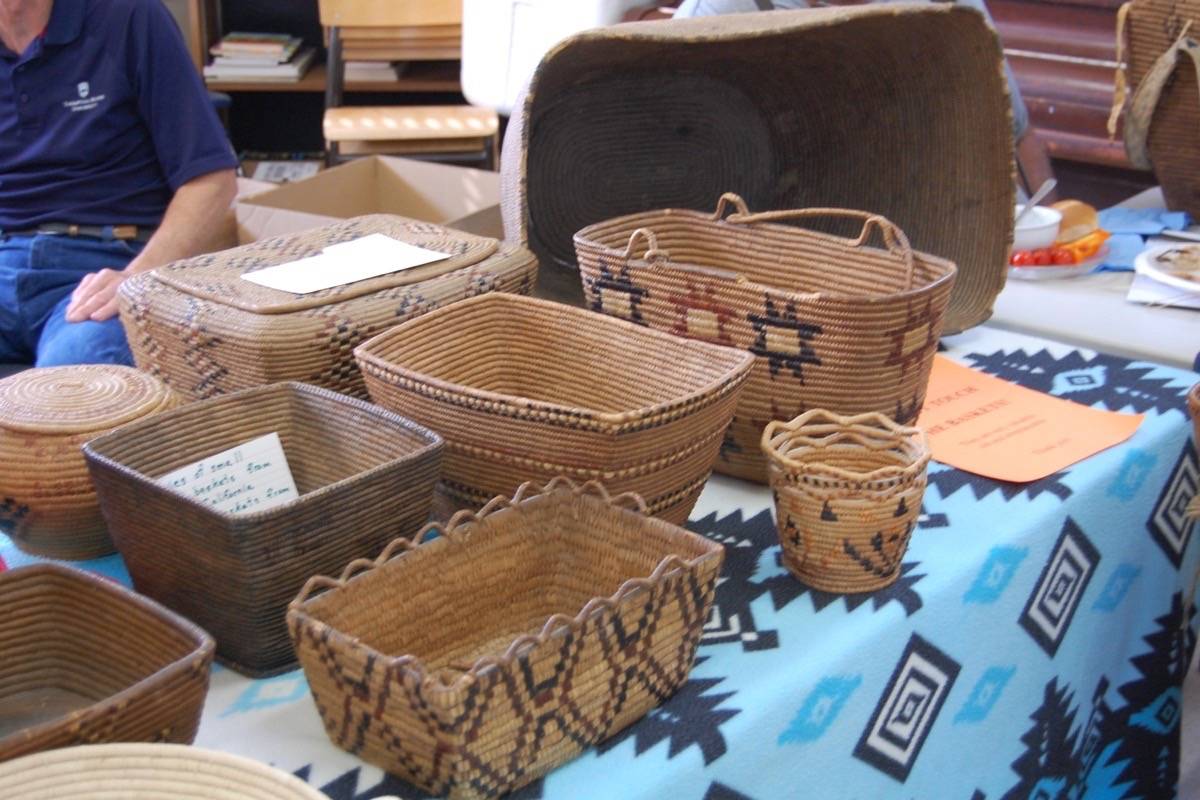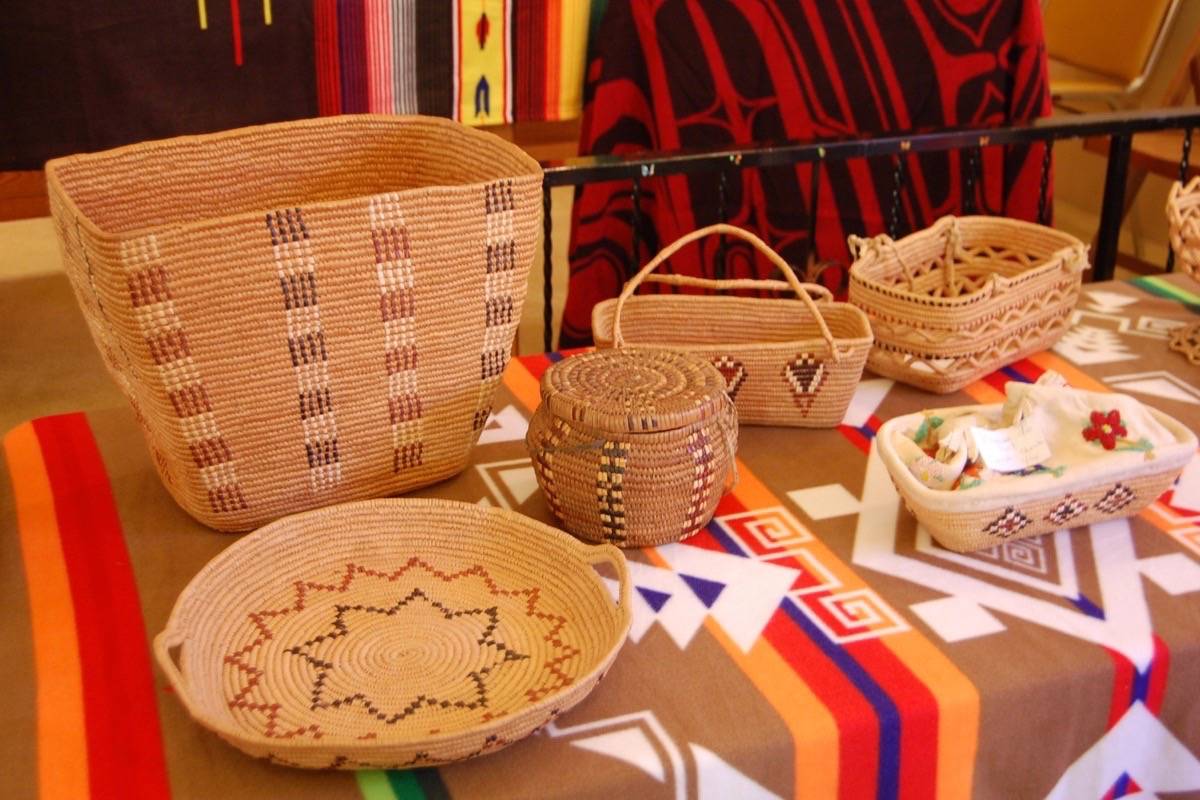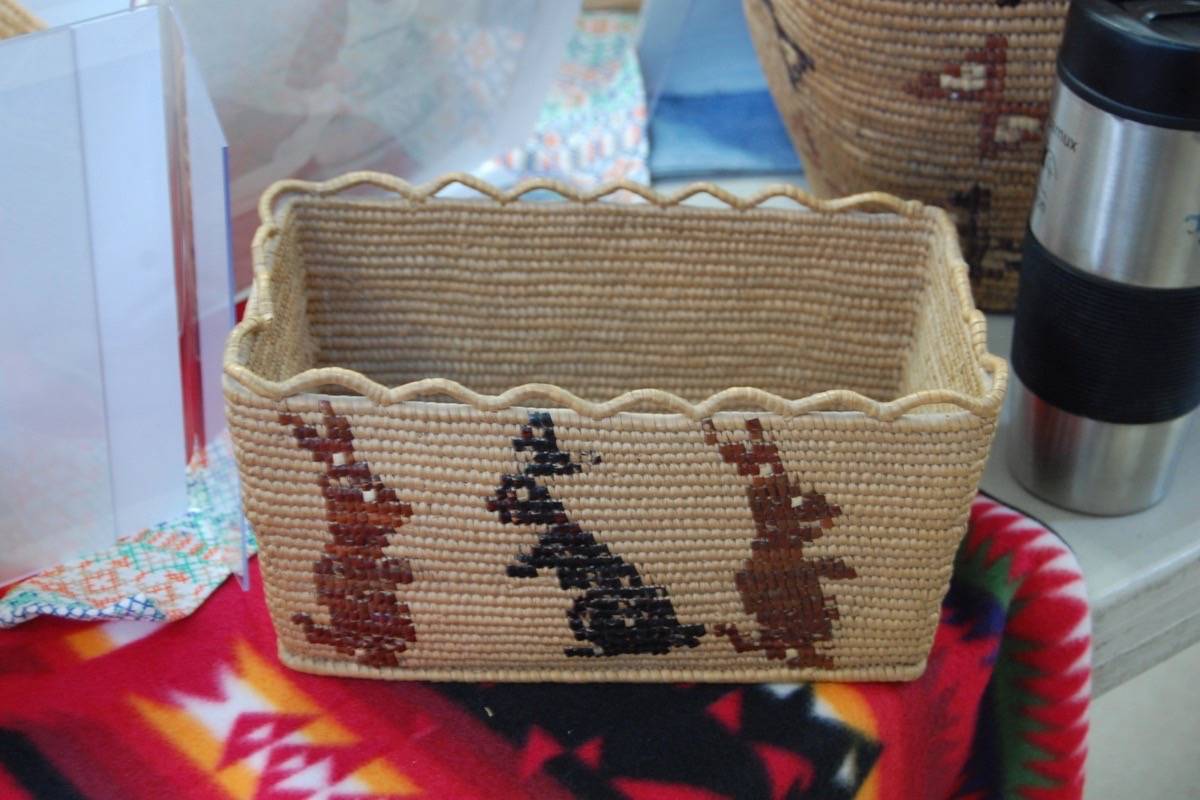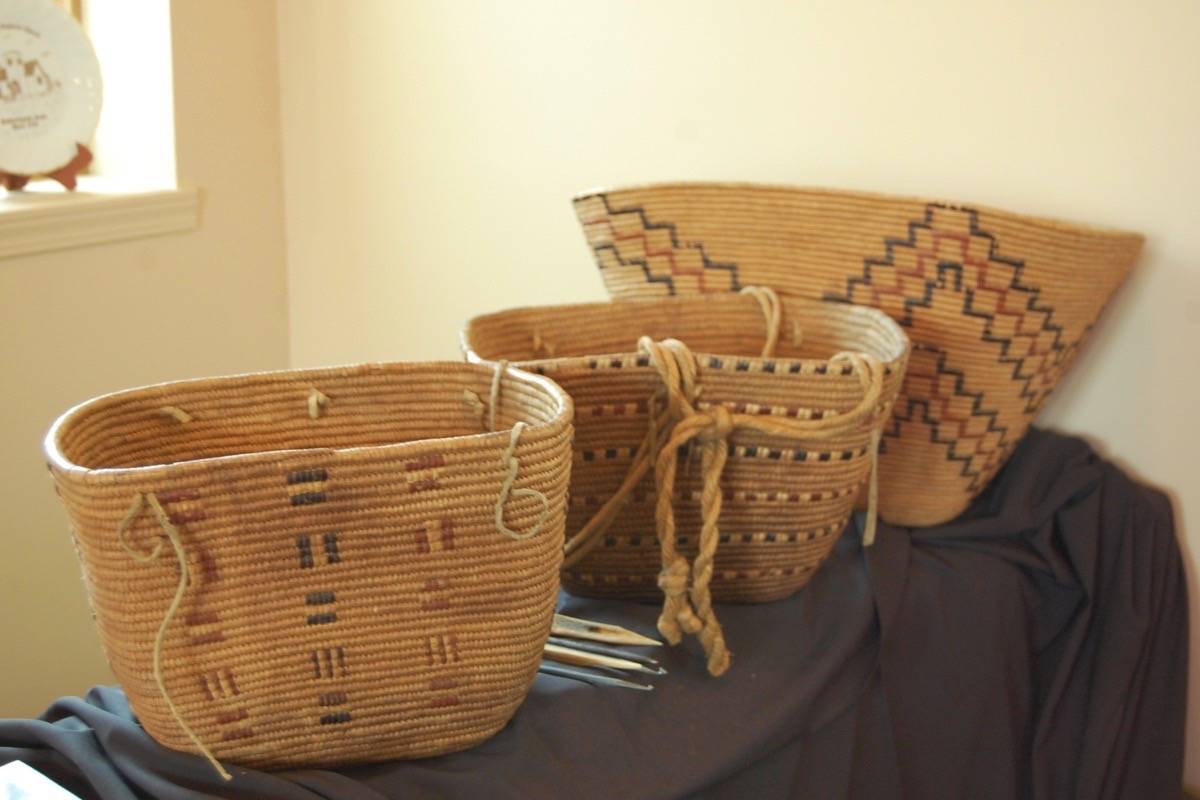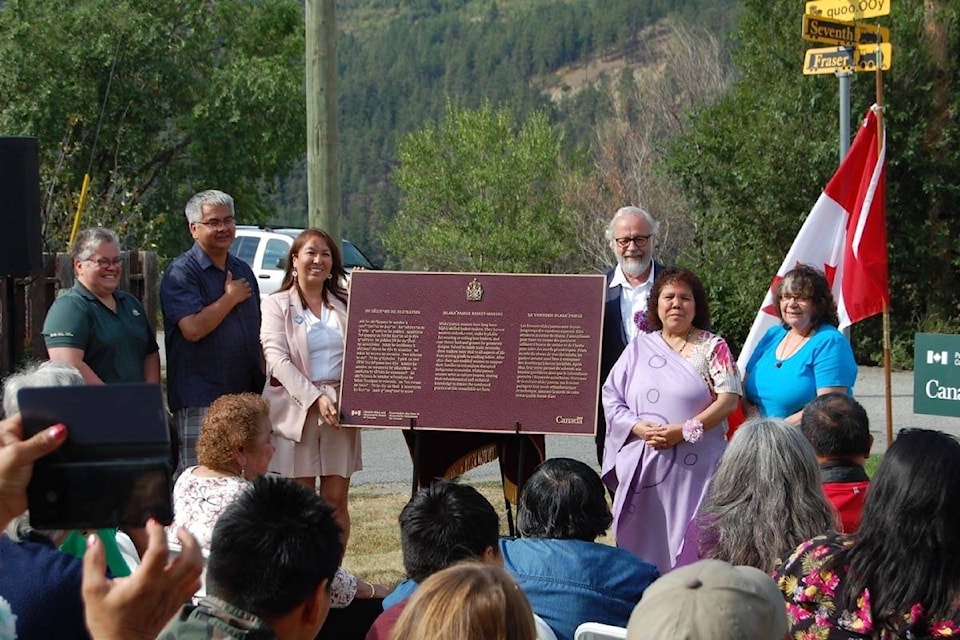Nlaka’pamux women have long been skilled basket-makers, creating brilliant pieces of art which reflect their culture and traditions but which also serve a practical purpose.
On September 4 this ancient craft—along with the women who practised it and have kept it alive—was recognized by the Government of Canada, with the unveiling of a plaque in Lytton. The plaque comes from the Historic Sites and Monuments Board of Canada, part of Parks Canada.
More than 120 people were on hand to witness the plaque unveiling outside the Parish Hall in Lytton, at a site overlooking the confluence of the Thompson and Fraser Rivers. After the plaque was revealed, a water ceremony was performed, which saw jars of water from both rivers poured over the plaque so that they could join again.
Speakers acknowledged the importance of basket-making to the Nlaka’pamux people, and spoke of some of the many women who have, over the last 175 years, helped to keep the tradition alive. Between 1850 and 1930, as European settlers in the B.C. Interior disrupted traditional First Nations economies, the production and marketing of baskets by Nlaka’pamux women helped support their families.
By the 1950s, knowledge of basket-making skills among the Nlaka’pamux people was on the verge of disappearing. However, a renewed interest in, and appreciation of, Indigenous arts helped to preserve the craft, and a new generation of basket-makers emerged. The baskets of the Nlaka’pamux women, both old and new, were recognized as art of the very highest calibre, ensuring that the practice continues to this day.
Chief Janet Webster of Lytton First Nation said that the plaque “Honours our forebears who made these beautiful baskets.” She mentioned a few of the women who practice the craft today, and added, “It’s time for me to step up to the plate and learn basket-making from these wonderful people.”
Timothy Christian, British Columbia Member of the Historic Sites and Monuments Board of Canada, officially welcomed Nlaka’pamux basket-making to Parks Canada. He noted that the baskets represented “the enduring strength of the Nlaka’pamux people and the importance of women,” adding that “The plaque recognizes the importance of this beautiful craft, and its role in Nlaka’pamux life, as an event of national historic significance.”
More than 800 designs have been identified on the baskets, which are painstakingly crafted from cedar roots which must be gathered and prepared before work can start. The baskets come in a wide variety of shapes and sizes, and serve as storage containers, trays, baby carriers, bowls, boxes, and much more.
After the unveiling of the plaque—the wording of which is in Nlaka’pamux, English, and French—attendees were able to view dozens of baskets old and new that were on display in the Parish Hall and nearby St. Barnabas Church. John Haugen, an expert on Nlaka’pamux basket-making, had carefully curated the displays, which also contained information about, and photographs of, some of the women who practised the craft in the 19th and early 20th centuries.
The craft of basket-making has been noted by Parks Canada as central to Nlaka’pamux cultural identity, signifying the role of women as culture-bearers. Francine Joe, who was born in the Nicola Valley and is president of the Native Women’s Association of Canada, said that the baskets are treasures that have been passed down through families.
“This plaque recognizes and honours our women, who are strong and resilient.”
Created in 1919, the Historic Sites and Monuments Board of Canada advises the Minister of Environment and Climate Change regarding the national historic significance of places, people, and events that have marked Canada’s history. The plaque will remain in Lytton, and it is hoped that it will eventually be a housed in a new park that is planned around the memorial to Chief David Spintlum (Cexpe’nthlEm) outside the Lytton Parish Hall.
editorial@accjournal.ca
Like us on Facebook and follow us on Twitter
